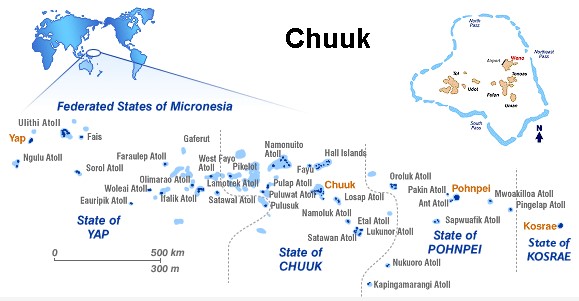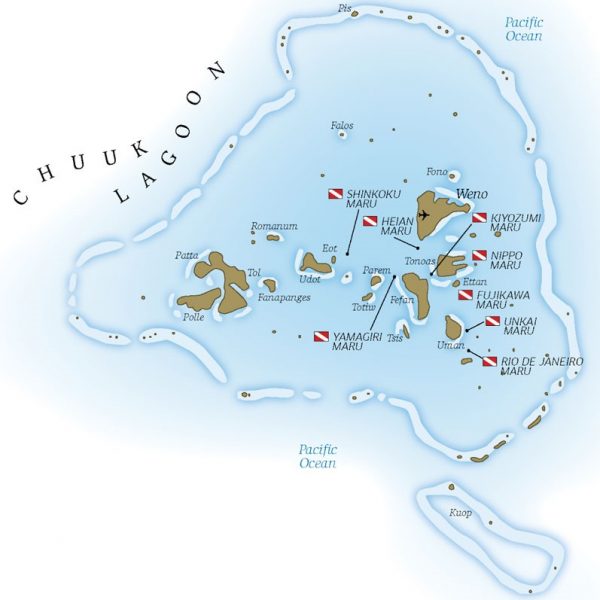The Allied ‘Operation Hailstone’ in February 1944, and two more attacks of April and June ‘44 left the lagoon floor littered with Japanese cargo and armed military ships. Decades later, they have become natural reefs, draped with corals and serving as fish havens, with most wartime artifacts still aboard. They are fascinating sites to visit and many are accessible to any experience levels of divers. Shallower ships have become overgrown reefs hosting species of over 700 fish and nearly 400 corals, plus numerous invertebrates.
This location is unsurpassed for quantity of dive accessible wreckage in close proximity, situated in shallow clear waters. Many wrecks are visible while snorkeling, and various on-shore ruins can be viewed as relics of the past conflict. .
Most shipwrecks lie adjacent to the high islands of DubIon, Eten, Fefan and Uman, and represent the largest naval loss in history. Their cargoes of tanks, trucks, airplanes, mines, bombs, machine gun bullets and thousands of other artifacts including beautiful china are there still to be explored.
The islands of this big atoll are rich with natural beauty, and a 180 mile encircling barrier reef is full of sand spits with overhanging coconut palms. Various mid-lagoon high islands have emerald peaks rising to blue skies.
A slow paced life in Chuuk often permits time to enjoy its natural features with lush islands as home to beautiful migratory birds, with occasional bird watchers viewing them at higher locations.
Divers are amazed in viewing preserved shipwrecks still in pristine condition following 70 years of submerging into warm, tropic waters. Truk is undisputedly the world’s finest shipwreck diving destination. Wide assortments of hard and soft corals in brilliant colors delight both day and night divers, and vast selections of in-place artifacts testify to its historic preservation by local authorities.
Historic items among encroaching jungles include a Japanese lighthouse, perched atop a high island, reached by hiking or driving. Old runways, command centers, gun emplacements, cave networks, hospitals and libraries can be located when utilizing a knowing guide.
The most suitable method to explore Chuuk is from aboard a liveaboard dive vessel. Often overlooked outer reefs have wide varieties of pelagic and reef fish along cascading coral walls stretching down into a blue abyss below. Windsurfing and sailing are popular during NE tradewind periods from Dec to late April.


